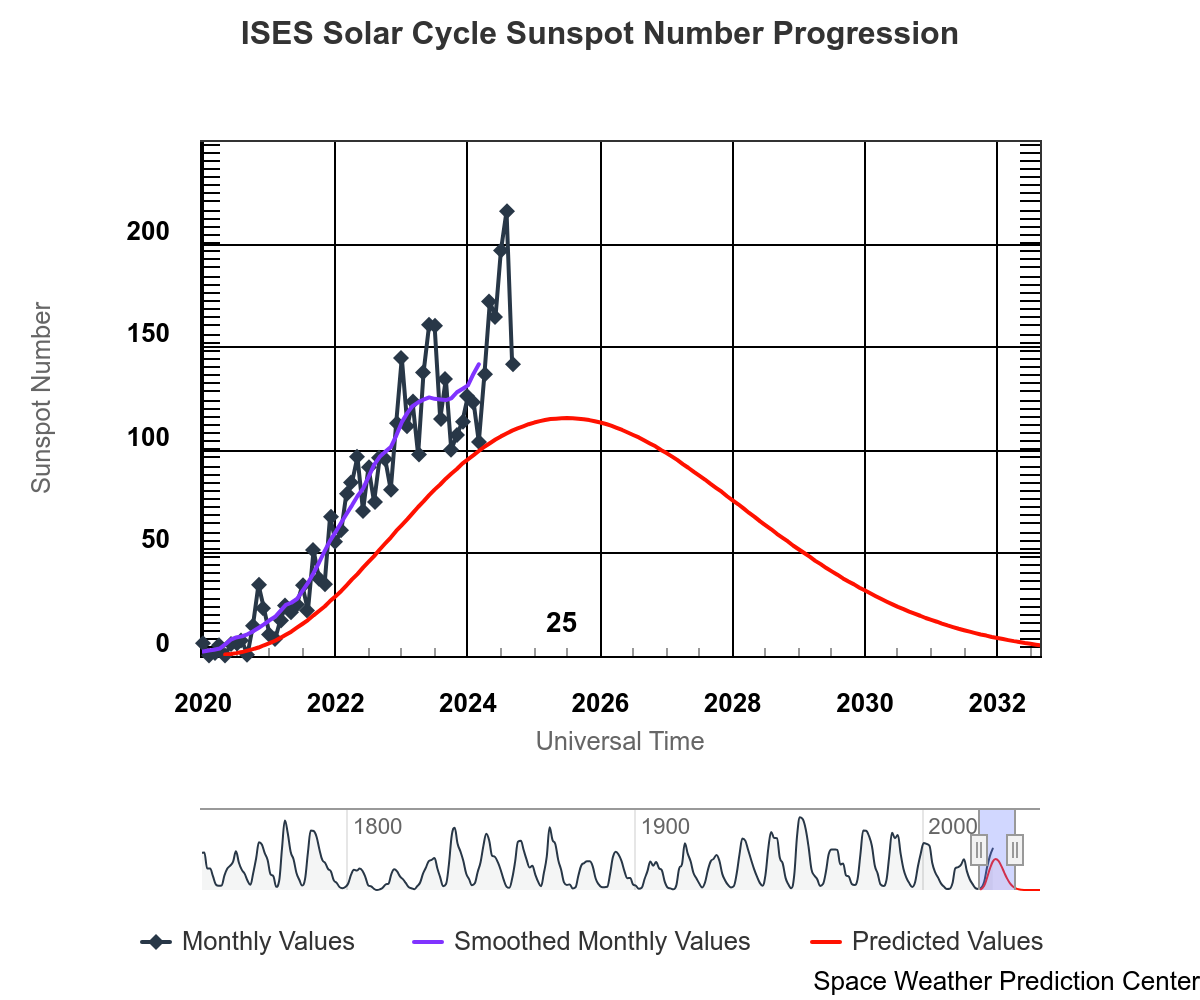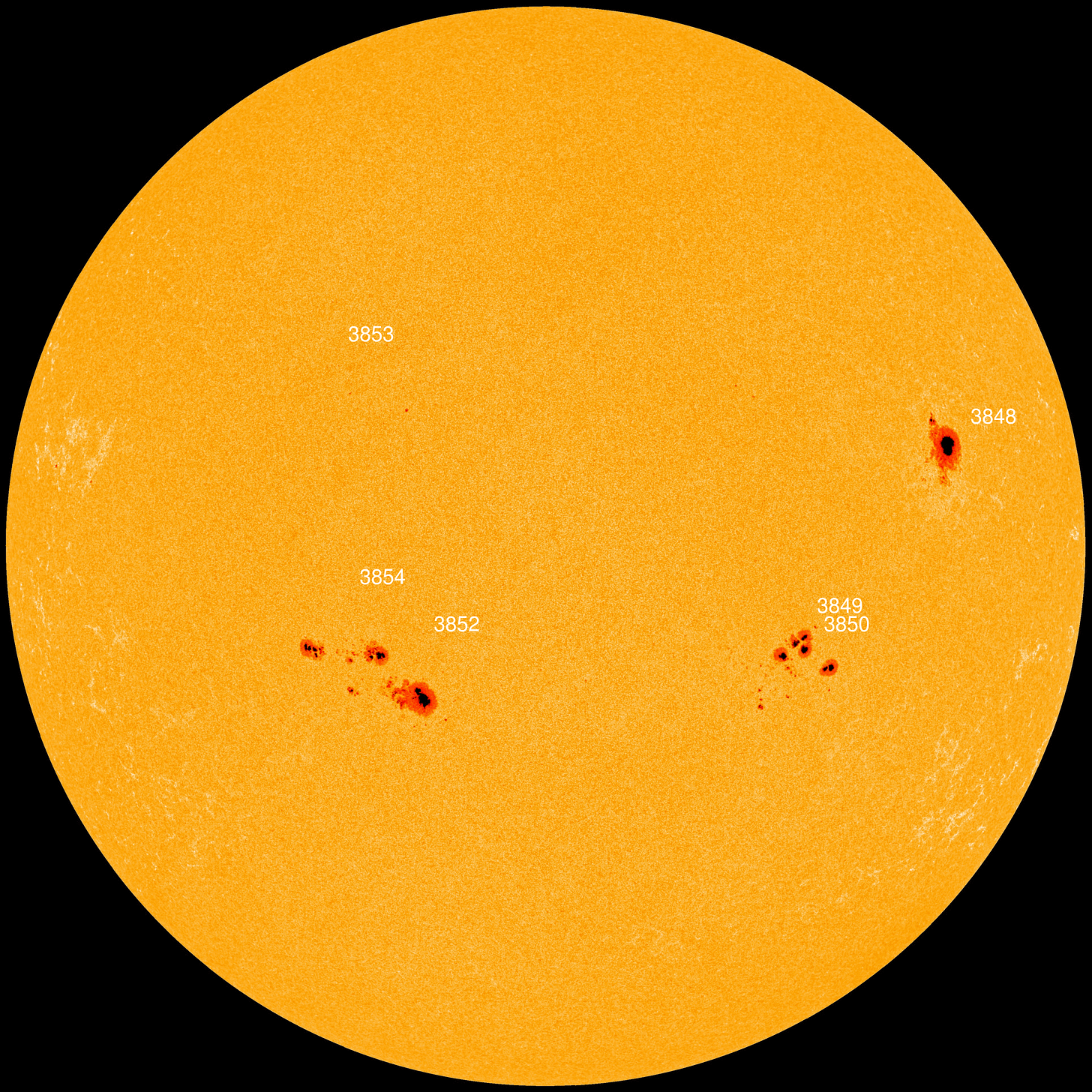Solar Cycle 25 Maximum Brings Yet Another Great Aurora Display: The Events Of May 10th & October 10th, 2024.
Solar Maximum is here for a good time. And hopefully a long one.
I’m sure many of you enjoyed the incredible aurora display back on October 10th (and the display back in May, too). This has been a great year for aurora lovers; with at least three major displays (one in May, August and now October) and plenty of less intense, but still very enjoyable shows interspersed throughout the rest of the year. The high end events have been so powerful that Texas, Florida & Arizona (and even reports further south) have had numerous horizon sightings. It has been a great year…so far.
Solar Cycles
You might be wondering why 2024 has presented so many good aurora viewing days when compared to previous years. WIthout turning this into a very long article, the short(er) answer is that we’re currently in the approximate peak of what’s called a Solar Cycle. Every cycle lasts about eleven years and has solar maximums and minimums associated. Usually the minimums occur at the new solar cycle transition point and the maximums occur towards the middle of the time frame, but the timing isn’t perfect.
In solar maximums, the sun tends to produce more sunspots than average. These sunspots can sometimes be eruptive, producing Solar Flares and Coronal Mass Ejections (CMEs) which, when impacting earth’s magnetosphere, can produce aurora events (this is the heavily simplified explanation). In addition to the aurora displays, the rare very strong flares events can disrupt radio communications, GPS tracking and, at times, even the electric power grid.
Therefore, it should come as no surprise that the probability of seeing the aurora in the mid latitudes is much lower in solar minimums. The high end aurora events are more likely to occur if there’s more numerous sunspots, which have a higher chance of producing solar flares & CMEs, which happen more regularly in solar maximums. Solar minimums just don’t produce enough sunspots to increase the probability of incredible aurora events, but that’s not to say it can’t happen. An example of how cycles work is below.

Our current solar cycle, Cycle 25, began in December 2019 and is expected to end around 2030. In the graph projection below, 2024 through 2026 is the expected solar peak before activity is expected to slowly decline. 2024 has been an extremely active year thus far and it’s expected that this increased sunspot activity will continue for the next several years (great news for aurora aficionados).
In fact, Cycle 25 has been beating projections in terms of sunspot formation, with over 200 formed earlier in 2024 alone. Far higher than projected. It is impossible to project whether this above average peak continues (expect to see some ebbs and flows), but the probability of increased sunspot frequency, while in solar maximum, looks to continue.
Now, let’s get into two of the major shows earlier this year.
The Aurora Event of May 10th, 2024
Before getting into it, if you don’t know how the solar flare ranking system works, here is a link explaining it, but to keep things simple enough, X class flares are the most powerful ones. You don’t exclusively need X class flares to get major solar storms, though. M class, or many smaller flares cannibalizing each other, can produce a great show. Additionally, geomagnetic storm classifications are important to be aware of. The scale ranks from G1 to G5, with G1 being minor and G5 being extreme. This will become relevant in the discussions.
In the case of the May 10th/11th event, the major solar storm was kicked off due to a series of solar flares and associated CMEs ejected towards earth from sunspot AR3664 that cannibalized each other. In addition to at least four M class flares within this cannibal CME, was a strong X2.2 flare, which provided further potency to it once catching up to the smaller CMEs. NOAA was projecting a severe geomagnetic storm (G4) on the night of the 10th/11th as a result. In actuality, the early morning of May 11th reached G5 — extreme storm status.
The arrival times of CMEs are dependent on how violently the plasma is ejected away from the sun and towards earth. The majority of slow to average paced ejections (typically the less intense ones) take at least a day to reach earth. In this event’s case, the majority of M class flares took over a day to reach earth, but the X2.2 flare, which was ejected with a higher velocity, caught up and cannibalized previous CMEs that were released a day earlier. In the case of May 10th, the CME arrived mid day.
After seeing the pictures of the aurora ongoing in Europe, my focus shifted to cloud cover later. Readily apparent throughout much of the day in Southern Ontario, most of the cumulus clouds that formed due to diurnal heating would eventually fade out around sunset, but some models projected cloud formation in the early morning of the 11th. With model projections uncertain about areas away from light pollution being free of clouds, I decided to stay put after seeing model consistency of my area being completely clear after ~10 pm. The area would have more light pollution, but cloud free the majority of the night.
After 10 pm, the clouds cleared completely and the show began. For the first hour, what started as a combination of green & red glow began to erupt into a more vivid, colorful display with the arrival of substorms. These substorms, expectedly, had an ebb and flow to them, but seemed so frequent that minutes after the ending of one, another would begin.
My initial worry of light pollution was unfounded for an event of this strength, as corona was appearing directly over my head for the majority of the night. In fact, in the strongest substorms, I had to look SOUTH to see the main aurora display, which had the added benefit of looking away from major light polluted regions (Toronto to my north, specifically). I continued taking in as much of the incredible show as I could until cloud cover began to creep back in around 4:00 am.
Here are some of my favourite pictures from May 10th, but more are available on my website: antonfalco.com
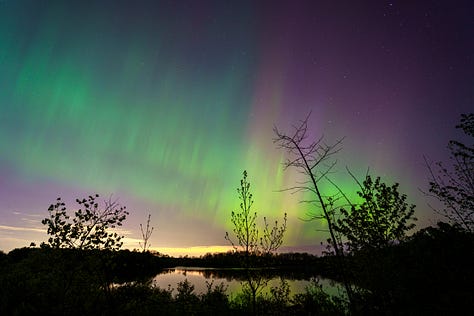
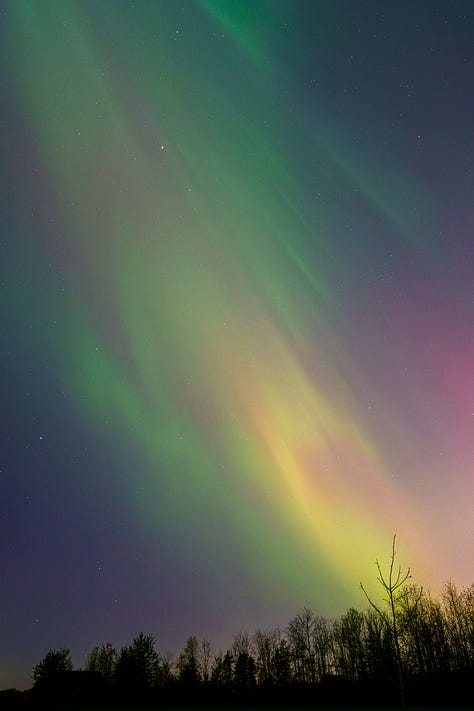


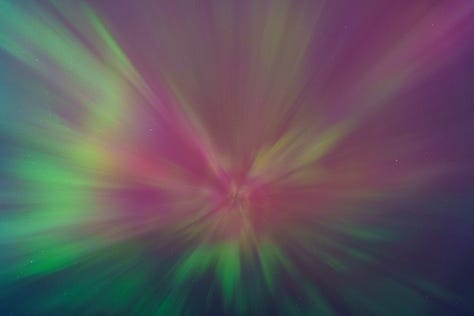
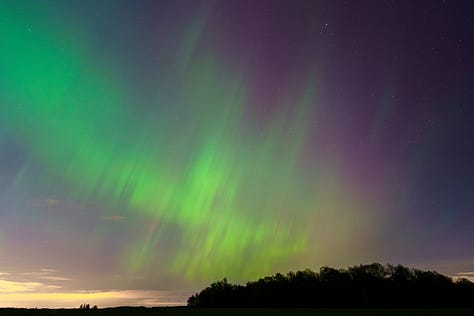
The Aurora Event of October 10th, 2024
In contrast to May 10th, the October 10th event was kicked off from a single, powerful X1.8 class solar flare that produced an earth directed CME at 01:56 UTC on October 9th. It originated from sunspot 3848, which as of this writing, has shifted to the back side of the sun.
To reiterate, the arrival times of CMEs are dependent on how violently the plasma is ejected away from the sun and towards earth. In this case, because this CME was strongly ejected and had a direct earth facing component, the CME took less than a day to arrive. It hit earth at 14:50Z on October 10th (that’s 10:50 am EST). Similar to May 10th, it meant we’d have to wait the full day until darkness.

In terms of cloud cover, much of the mid latitudes in North America were lucky that October 10th was largely free of synoptic events that would produce thick, extensive cloud cover. Southern Ontario, notoriously unlucky in the cloud cover/aurora timing dynamic, did not have any cloud concerns until the early morning hours of the 11th. Cumulus clouds that formed from diurnal heating during the day began to fade around sundown, similar to May 10th.
My area is surrounded by larger cities in most directions: Hamilton to the west, St. Catherines to the east and Toronto to the north. Unlike on May 10th, where cloud was impacting areas to the NW, to get the best possible viewing experience, I travelled about 1-2 hours northwest of the major light polluted areas. My target zone was around the town of Arthur, a bit north of Guelph, for around 9:30 pm. It lies in the best combination of manageable drive and significantly less light pollution.

As I was driving and exiting the outskirts of Guelph, I began to see the aurora, by eye, both above and ahead of me. Hoping not to miss what was a strong ongoing substorm, I pulled over sooner than anticipated to get some pictures near the town of Fergus before eventually continuing to Arthur.
Around midnight, the strongest substorm began. This substorm put on the best aurora display I’ve ever seen. It was the first time in my life that I saw what I can best describe as a flickering aurora display; in addition to vibrant colors and the entire skyline being filled (video above). It was an incredible show from start to finish.
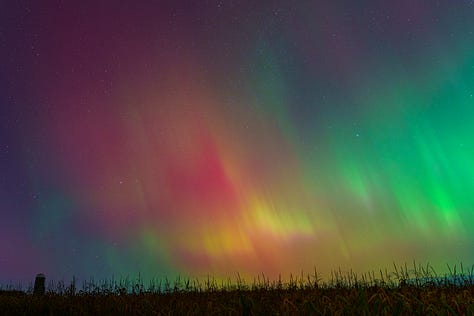
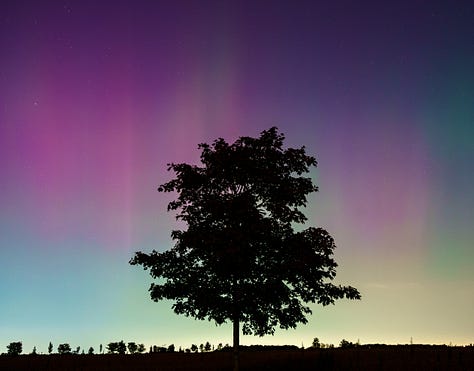
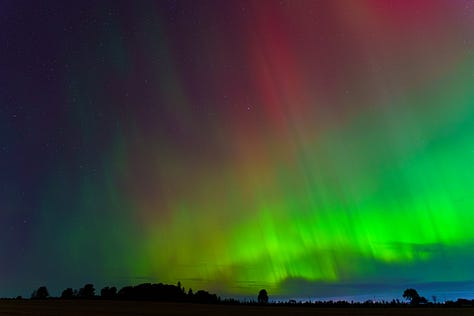
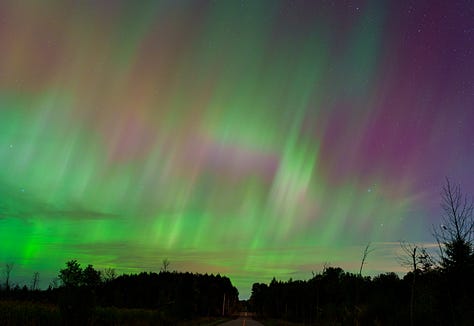
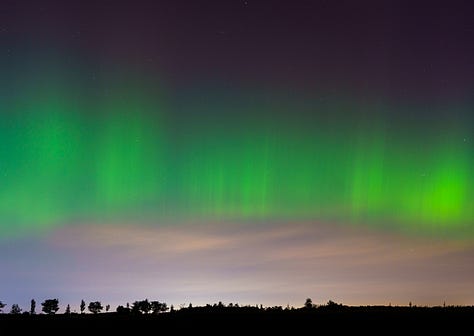
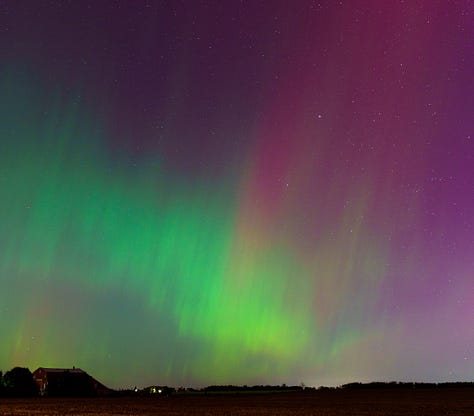
Here are some of my favourite pictures from October 10th, but more are available on my website: antonfalco.com
We’re in peak of solar maximum, so we should have more major storm aurora events in the coming years. Thanks for reading.




